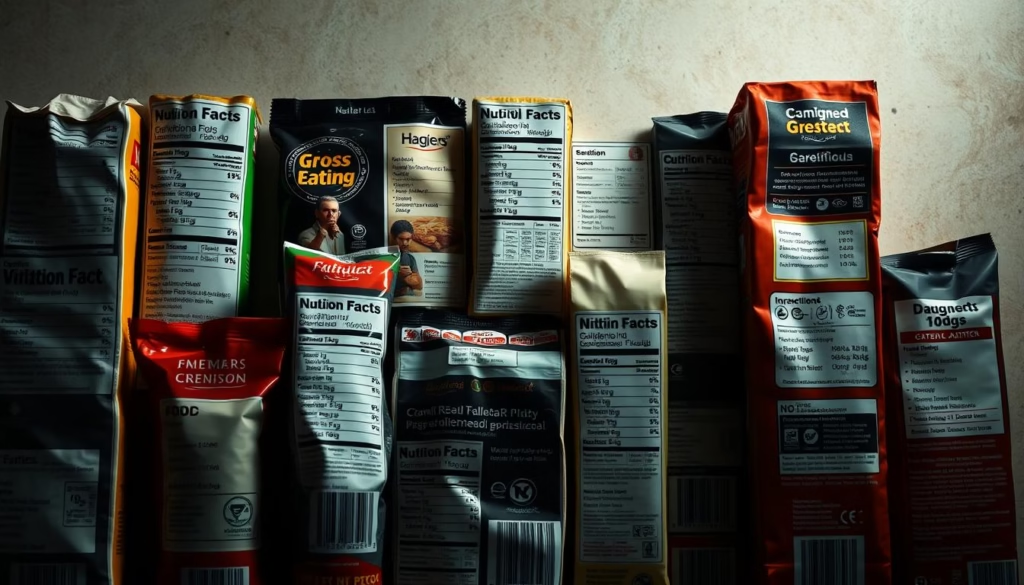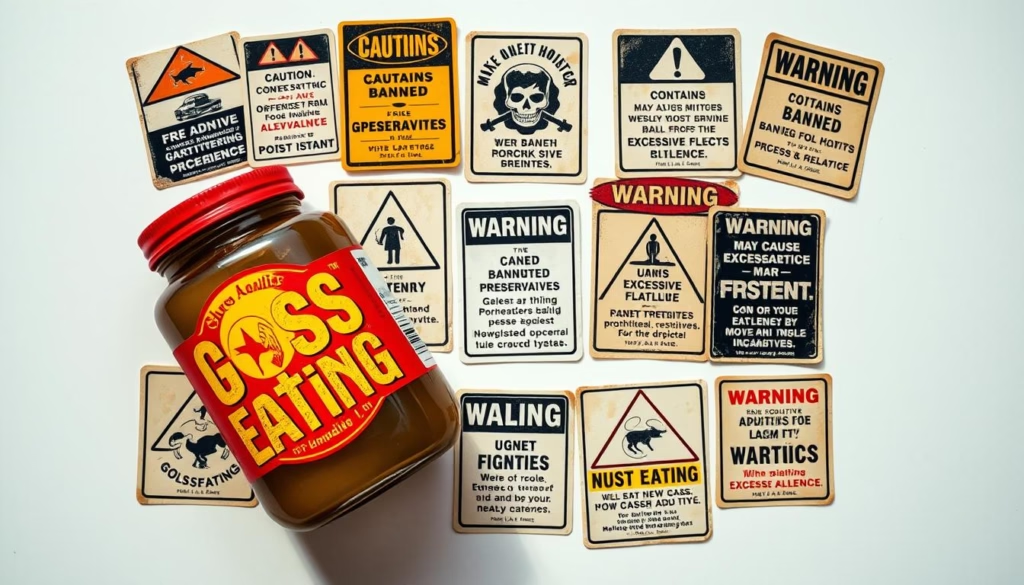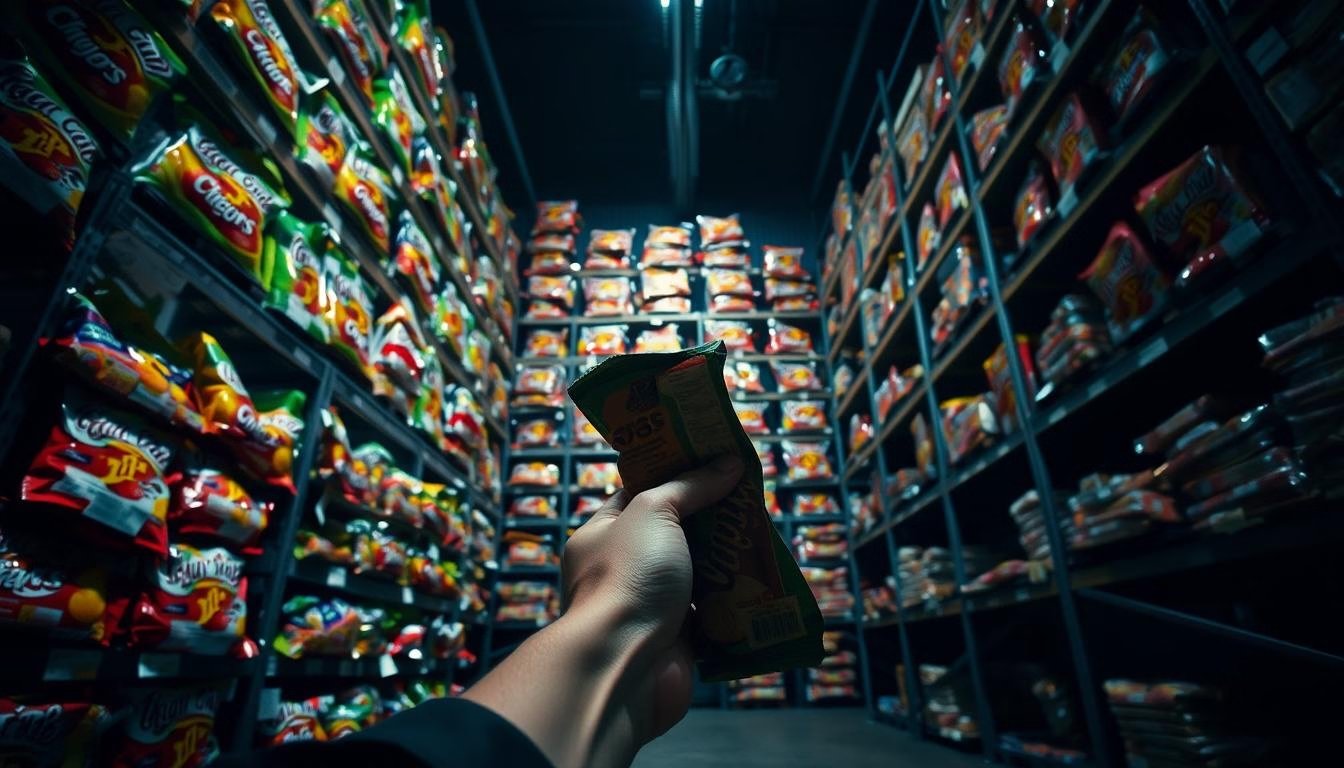Governments worldwide are focusing more on regulating junk food.
Texas and Indonesia have brought in new laws against ultra-processed snacks.
This has started a big debate about the snack food industry’s future.
These new rules want to cut down on unhealthy snack eating. But, it’s not clear if they will really change how people eat.
Looking into these laws’ effects is key. We need to think about how they might change the snack food world and our health.
Key Takeaways
- New laws in Texas and Indonesia target ultra-processed snacks.
- The regulations aim to reduce consumption of unhealthy snacks.
- The effectiveness of these laws in changing consumer behavior is uncertain.
- The snack food industry may face significant changes.
- Public health could be positively impacted by these regulations.
The New Wave of Food Regulation
As obesity rates soar worldwide, governments are rethinking their food rules. The obesity crisis is urgent, with obesity prevention policies now key in many places, like Indonesia.

The Growing Obesity Crisis Driving Policy Changes
The World Health Organization warns of rising obesity, with rates doubled in some countries.
This is due to more processed foods with sugar, salt, and unhealthy fats. So, governments are pushing for policies to lower obesity rates.
Clear global food labeling laws are a big part of these changes. They help people make better food choices.
Government Approaches: Warning, Nudging, or Banning
Governments are trying different ways to control food, from warning labels to bans. For example, some countries are setting rules to limit food industry influence on health policies.
Some governments use a nudge-based strategy, encouraging better choices with small changes in labels and ads. Others ban certain ingredients or set strict nutrition standards.
The debate on food rules is ongoing. It’s clear we need a mix of strategies to tackle obesity. By understanding these approaches, we can keep up with the changing food regulation scene.
Texas’s “Make America Healthy Again” Law Explained
Texas is making a big move towards healthier eating with the “Make America Healthy Again” law. This law aims to better public health by controlling the food industry. It focuses on additives and labeling.
The 44 Additives Targeted by Warning Labels
The law targets 44 additives banned or restricted elsewhere. These include Red 40 and trans fats, linked to health problems. Products with these additives must now have warning labels.

Implementation Timeline and $50K Daily Fines
The law will be rolled out in stages, starting with warning labels on certain products. Companies not following the rules could face fines up to $50,000 daily. This strict rule aims to keep consumers safe.
Mandatory Nutrition Education in Schools
The law also makes nutrition education in schools mandatory. It teaches kids about healthy eating and nutrition’s value.
The New Watchdog Committee’s Role
A new committee will watch over the law’s enforcement. It will check on compliance, handle consumer issues, and help manufacturers.
| Key Provisions | Details | Implementation Timeline |
|---|---|---|
| Warning Labels on 44 Additives | Products containing targeted additives must display warning labels | Phase 1: 2025 |
| Mandatory Nutrition Education | Nutrition education will be introduced in schools | Phase 2: 2026 |
| Fines for Non-Compliance | Up to $50,000 per day for non-compliant manufacturers | Immediate |
Indonesia’s Traffic Light System: A Different Approach
Let’s take a look at a global approach to this issue. To tackle the doubling obesity rates, Indonesia has introduced a Traffic Light System.
It color-codes food products based on their nutritional content. This system aims to give consumers clear info on the healthiness of their food choices.
Nutritional Color-Coding
The Traffic Light System uses colors to show the sugar, salt, and fat in foods. Red means high levels, yellow means moderate, and green means low. This labeling helps people make better choices when buying food.
Restricting Junk Food Ads Near Schools
Indonesia also limits ads for junk food near schools. This rule aims to keep kids away from unhealthy food marketing. It helps create a healthier environment for young people.
Addressing the Obesity Crisis
Indonesia’s obesity rates have doubled, leading to government action. The Traffic Light System and junk food ad ban are part of this effort. The goal is to encourage healthier choices and lower obesity rates.
Indonesia’s approach is a model for other countries to fight obesity and health issues.
Popular Processed Food Products Under Scrutiny
Red40, BHT, and trans fats are being watched closely in foods like Skittles and Doritos. Governments are cracking down on unhealthy ingredients. This forces manufacturers to change their recipes to meet new rules.
Products Containing Red40, BHT, and Trans Fats
Many popular foods have ingredients that are now being questioned. For example, Skittles have Red40, a dye that might be harmful. Some Doritos have artificial flavors and colors that could face new rules. Trans fats, known for their health risks, are being removed from many snacks.
Other foods like microwave popcorn, frozen pizzas, and snack cakes might also be affected. These items often have additives that are being rechecked by regulators.
Are Skittles, Doritos, and Other Snacks Next?
The future of these snacks is uncertain as governments think about stricter rules.
In my state of Texas, a new law could add warning labels to certain products. This could lead to similar laws in other places or even nationwide.
Andrew Brown, a food industry expert, says, “Manufacturers need to change their recipes now to avoid new rules.”
How Manufacturers Are Reformulating Products
Many companies are changing their recipes in response to new rules. They are replacing bad ingredients with safer ones. This can be hard and expensive.
Some are using natural colors instead of synthetic dyes. Others are cutting down on sodium or removing trans fats. These changes are tough but can make their products seem healthier.
“The trend is clear: consumers are demanding cleaner labels, and manufacturers are responding. It’s not just about compliance; it’s about staying competitive in a changing market.”
It’s refreshing to see that the food industry is changing, and only products that are tasty, convenient, and healthy will do well.
The Battle Between Health Advocates and Food Industry Lobbies
As governments worldwide introduce new food rules, a fierce battle is underway. This fight is clear in places like Texas and Indonesia as new laws aim to cut down on unhealthy food.
Criticism: Are These Laws Misleading?
I get the criticism from some that these new laws might be misleading. They will not really change how we eat junk food.
For example, Texas’s law with warning labels on certain additives might not cut down sugar and salt use. Are these rules a good start, or just a small step?
Industry Pushback and Lobbying Efforts
Of course, the food industry is fighting back against these rules. They say the laws are too strict and could hurt their business.
Companies like PepsiCo (Doritos, Mountain Dew), Kellogg’s (Pop-Tarts, Cheez-Its), and Mondelez (Oreo, Ritz) making products with Red 40, BHT, and trans fats are especially worried.
Economic Impact on Food Manufacturers
These rules will also impact food makers’ wallets. Changing products costs money.
This will make food more expensive for us, which will hurt sales for these big corporations who have been profiting off of junk food for decades.
Consumer Response to Changing Products
How we react to these changes is key. If we like the new products, companies might not lose much. But if we don’t, they could face big problems.
| Regulation | Potential Impact | Consumer Response |
|---|---|---|
| Warning Labels on Additives | Increased production costs | Potential decrease in sales |
| Restrictions on Advertising | Reduced marketing expenses | Increased demand for healthier alternatives |
| Reformulation of Products | Initial investment in R&D | Long-term brand loyalty |
Conclusion: The Future of Processed Food Regulation
As governments worldwide tighten rules on processed foods, there is no doubt that the snack industry is in for a wild ride.
Texas’s “Make America Healthy Again” law and Indonesia’s traffic light system are just the start. These moves are pushing the world towards healthier eating.
More processed foods might soon face bans or warning labels. This will force the snack makers to change their recipes.
Snacks like Skittles and Doritos, with additives like Red 40 and BHT, could be next.
The fight between health advocates and the food industry is far from over. As food labeling laws get stricter, we’ll see more unhealthy foods disappear from stores.
The list of banned foods is getting longer, and companies need to keep up. Can they quickly change their recipes, or will people choose healthier options instead? Let’s wait and see!




